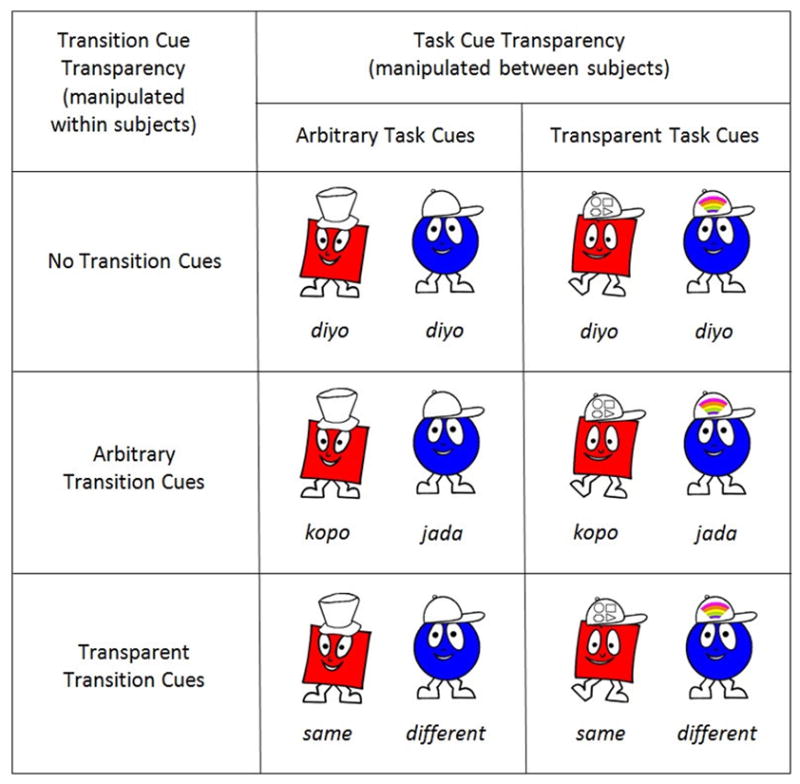Figure 1.

Illustration of task cues, transition cues and a subset of the stimuli used for each level of task cue transparency and transition cue transparency. In these examples, the character on the left appears on a no-switch trial and the one on the right on a switch trial. The contingency between arbitrary transition cues and trial type was counterbalanced. Task cues consist of hats on top of the stimuli and transition cues consist of auditory messages. In the No Transition Cue versions, the same auditory message was played on all trials (except for start trials).
